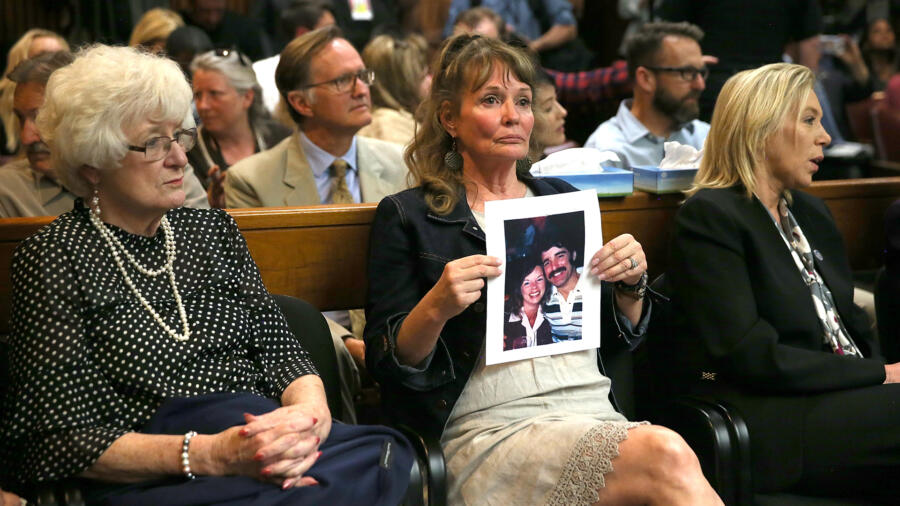Genetic genealogy entered the public spotlight on April 24, 2018. That was the day Joseph DeAngelo, then 72 years old, was arrested for the crimes of “the Golden State Killer,” a serial murderer-rapist who’d victimized dozens in California during the 1970s and ’80s.
Despite all the publicity those crimes drew, authorities had no credible leads for decades. But that changed when investigators uploaded crime-scene DNA from a rape kit onto GEDmatch—an online DNA database, similar to the more widely known site Ancestry.com. GEDmatch linked the perpetrator’s DNA to several distant relatives. Using that information, investigators built a family tree, which in turn brought them to DeAngelo. After surreptitiously collecting some of DeAngelo’s DNA through an item he had discarded, they got an alleged match to their killer, and made the arrest.
In the many months since, crime-solving via genetic genealogy has proliferated. In 2018 alone, investigators nationwide made more than 20 arrests in cold cases. But given that there are thousands of murders in America every year, of which 40 percent go unsolved, it begs the question: Why aren’t DNA databases being used to solve even more crimes? Couldn’t those numbers be even higher?
A Matter of Resources
One of the issues slowing down the use of the technology is money, says Jeff Dreher, chief investigator of the El Dorado County District Attorney’s Office and the commander of the El Dorado Cold Case Task Force.
Dreher’s task force helped solve two cold cases with genetic genealogy last year, using GEDmatch to identify the late Joseph Holt as the killer of Brynn Rainey and Carol Andersen, two young women murdered in the late 1970s.
Solving those murders cost the task force $5,000, Dreher says—money that went to Parabon NanoLabs, which used the DNA to create a family tree for investigators, allowing them to narrow their focus onto three brothers.
On the case-by-case level, that certainly represents a good deal, Dreher says.
“When you talk about personnel hours that I’d be spending on trying to develop a family tree, the cost is relatively cheap,” Dreher says. Still, Dreher says his task force has 60 cold cases. Add in all of the county’s active homicide cases, and the numbers quickly start to add up.
“A lot of stuff comes back to budget,” he says. But Dreher doesn’t think the finances are the main thing causing investigators to give pause before using GEDmatch and genetic genealogy.
It’s more an issue of whether what they’re doing is legal or not.
Legal Challenges of Using DNA Databases
Many people who upload their DNA into online databases are interested in knowing about their distant cousins, or what percentage Cherokee they are. They aren’t trying to inadvertently rat their uncles out to the cops.
David Kaye, a law professor at Penn State whose research focuses on the law of evidence, genetics and forensic science, says there’s no real historical precedent for a database that causes you to hand family members over to the police.
“The analogy has always been to fingerprints,” Kaye says. But that analogy is weak, he says, because “the analogy [should be to] people who submit their fingerprints to a central repository.” Even then, the comparison is imprecise, because fingerprints are only self-incriminating. They don’t bring police to your relatives.
Presently, the use of DNA databases remains an unresolved legal question. But just because Pandora’s box is open doesn’t mean it’ll stay that way. There have been plenty of times when crime-catching technology was scaled back by the courts.
Police around the country were doing a lot of electronic eavesdropping in the ’50s and ’60s, but ultimately had to desist when a Supreme Court decision ruled against warrantless telephone surveillance in 1967. And in 2018, warrantless monitoring of smartphone GPS records to place criminals at the scene of the crime was similarly struck down.
Given that track record, Dreher says his offices are careful not to lean too heavily on DNA databases while that verdict hangs over them.
“This is so new that the public might not agree with us doing it,” he says. “So for us, it’s a tool, but we should close out our other leads until we get a court hearing and determine that it’s legal.”
But Dreher is quick to add: It should be legal.
“We’re using consented samples provided by individuals… We’re not doing anything to covertly get information that wasn’t provided voluntarily.”
Can the Bigger DNA Databases Provide More Clues?
While GEDmatch cooperates with authorities, subscription-based websites like Ancestry.com have explicitly stated that they won’t share their users’ information with law enforcement unless subpoenaed to do so.
That curtails the strength of police DNA searches. Ancestry.com is gigantic, with more than 16 million users having uploaded DNA onto their database. GEDmatch, which allows police to access their data, is comparably small, with approximately one million users—5 percent of Ancestry’s base.
It would be complicated for investigators trying to get access to Ancestry’s more robust database. For one, the databases work differently.
At GEDmatch, users upload DNA information. That means investigators can take whatever DNA was left at a crime scene (e.g. blood, semen, skin cells) and use it as the basis for the match. With Ancestry, users send in saliva samples, which Ancestry technicians then analyze in their lab.
But if investigators were somehow able to work around that problem and get into Ancestry’s system, according to Kaye, that “sneakiness” might not be illegal.
“They do undercover investigations,” Kaye says. “What’s the difference?”
Is DNA Evidence from a Database Reliable?
But not all evidence is sound. As such, Dreher says his office will continue to take things slow.
“It’s so new at this point,” Dreher says. “We don’t want to make a habit of putting all our eggs in one basket… but when fingerprints were first used, we weren’t 100 percent sure about how confident we could be. Now we are. I think this’ll be the same type of thing.”
When that happens, Dreher says his county will start applying GEDmatch in earnest, in a myriad of contexts: to put names on unidentified remains, in active murder and rape investigations.
“We’re scraping the surface of the possibilities,” he says.
Related Features:
The Golden State Killer and Other Serial Killers Who Mysteriously Stopped Murdering
Why Do Some Serial Killers Stop Killing? It Might Be Hormonal
Familial DNA and Other New Ways Forensics Is Changing How Murders Are Solved
Phenotyping: How a DNA ‘Snapshot’ Can Create the Face of an Unknown Criminal


